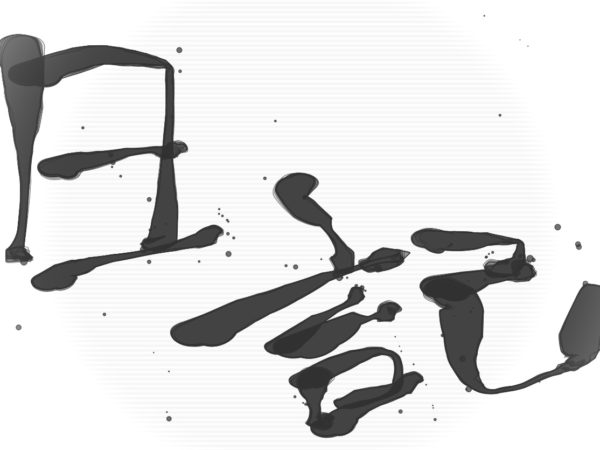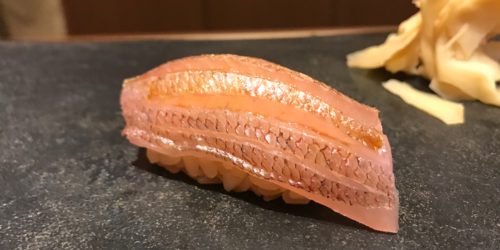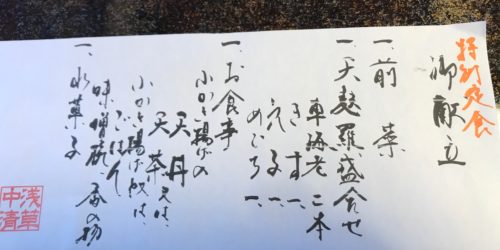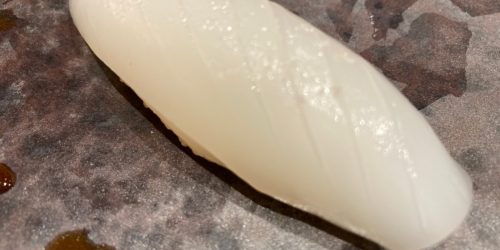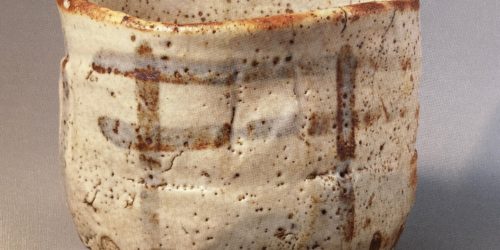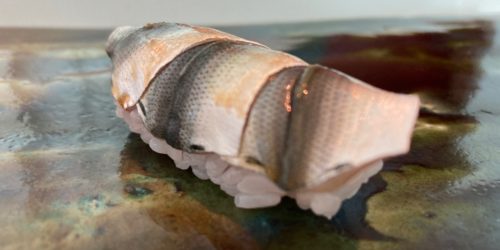The beautiful sushi of December, 2020
It was the last time I could savor authentic sushi before the end of this year.
As usual, I was heading to Kazahana on the 28th floor of the Conrad Hotel in Tokyo.
A Christmas tree was decorated in the hotel lobby, and that had created a sophisticated, Christmas atmosphere.

Kazahana was crowded with many hotel guests.
I sat on a sushi counter seat, and two sushi chefs greeted me with a smile.
Authentic sushi is an edible art, so a sushi chef is an artist, and I’m the audience.
For me, savoring sushi is the equivalent to appreciating art.
I’m always excited about savoring their sushi.
Now, I’ll introduce sushi according to the order of eating.
There were two appetizers available that day.
The first one was boiled green vegetables with bacon.
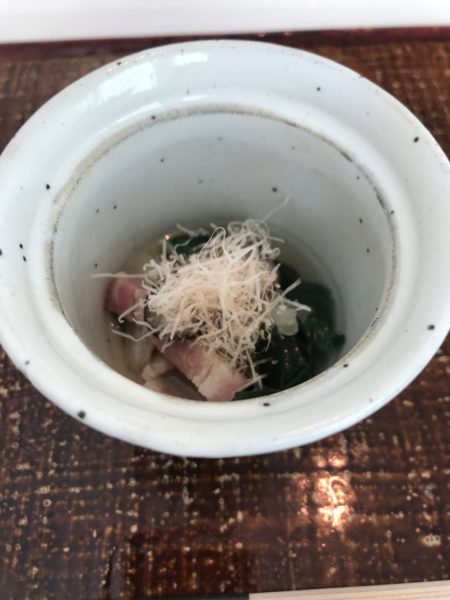
The second one was Saimaki-ebi (prawn) tempura.
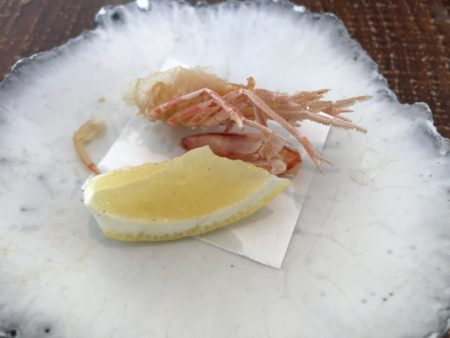
After I ate the appetizers, the sushi chef started to make sushi with a practiced hand.
The first sushi was Sumi-ika (cuttlefish).
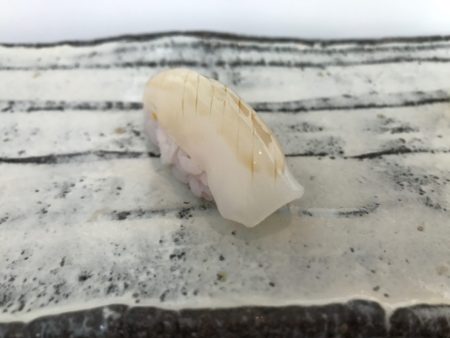
The sushi chef always makes a tiny cut in Sumi-ika. By doing this, Sumi-ika is easier to chew.
I enjoyed its soft texture and natural sweetness.
Dipping sushi into a small amount of soy sauce and eating is the most popular way of eating sushi.
For many Japanese people, soy sauce is believed to be the only seasoning that goes well with sushi.
However, there is another traditional seasoning for sushi.
It is called, “Nikiri”.
Nikiri consists of soy sauce, sake, and sweet cooking sake. In addition, its alcohol is evaporated by boiling.
Nikiri has a very mild flavor compared to soy sauce, and it goes well with fresh raw fish.
The sushi chefs at this restaurant spread Nikiri on their sushi.
So I don’t have to dip their sushi in soy sauce.
The second sushi was Saimaki-ebi (prawn).
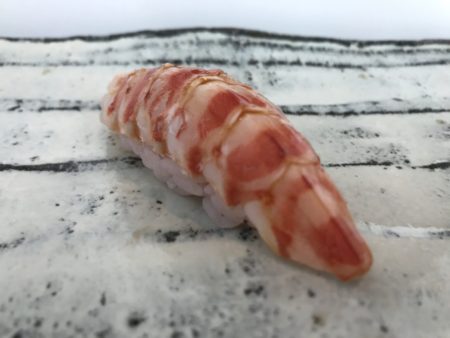
This gorgeous prawn really stood out.
The red and white stripe patterns on prawn reminds me of Kumadori (a peculiar style of makeup used in Kabuki).
Saimaki-ebi had a nice, soft texture.
That was truly an edible art.
The third sushi was Akami (lean tuna).
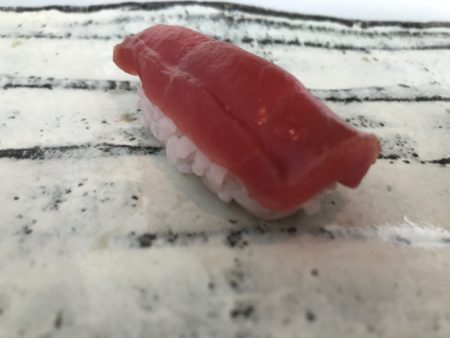
Tuna is the most popular sushi among Japanese people. Akami is the part of tuna where is less fat.
That is diametrically opposite to Otoro (fatty tuna).
Modern Japanese people prefer fatty tuna, but old Japanese people don’t like that.
I think it shows the westernization of Japanese people’s eating habits.
The fourth sushi was Shimesaba (vinegared mackerel).
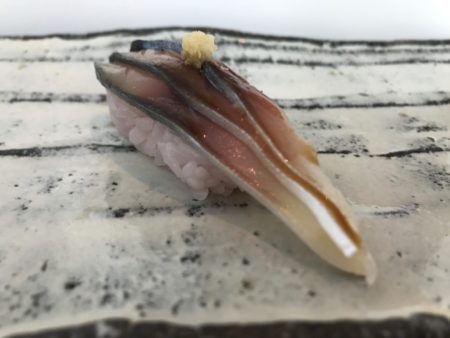
Winter mackerel is fatty and delicious, so now is the best time to eat it.
Vinegar enhances the mackerel’s natural sweetness.
The fifth sushi was Cyutoro (medium fatty tuna).
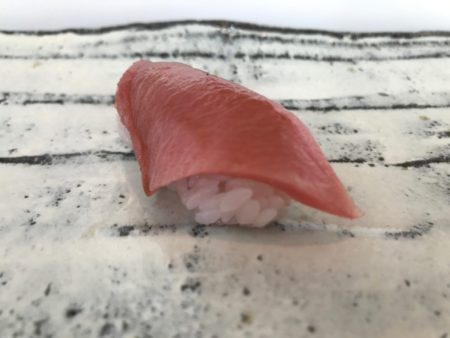
It had a very good balance of lean flesh and fat. It melted in my mouth, and it was amazing.
The sixth sushi was Nodoguro (blackthroat seaperch). It is an expensive fish. It’s skin was grilled lightly.
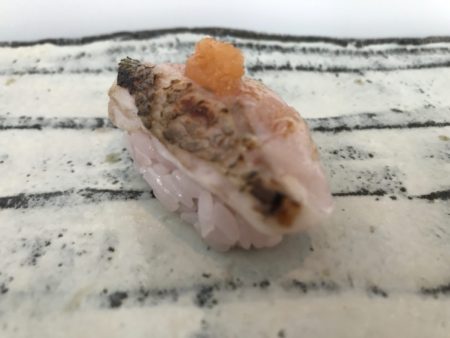
Thereby, Its fat dissolved considerably. The elegant taste of the fat was really impressive.
The seventh sushi was Kaisendon (assorted seafood rice bowl).
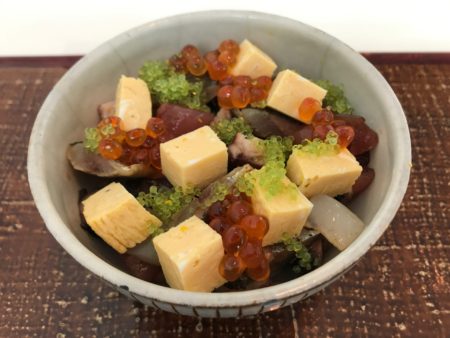
Various ingredients, cut into fine dice (cuttlefish, lean tuna, saury, conger eel, and Japanese omelet) were topped with a bowl of vinegared rice.
Some salmon roe, flying fish roe, and Yuzu-peel (Japanese citrons) were sprinkled on it.
The flying fish roe had a sparkly green color because it had been soaked in wasabi.
That Kaisendon looked like a beautiful jewel box. That was not only beautiful but also delicious.
The eighth sushi was Kanpyo (a sushi roll of dried gourd shavings).
I usually eat Kanpyo with plenty of wasabi at the tail end of the sushi.
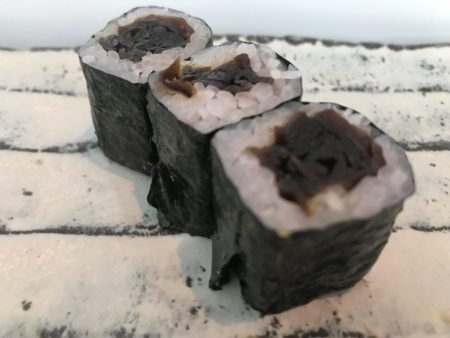
After I enjoyed the wonderful sushi, I ordered a matcha latte.
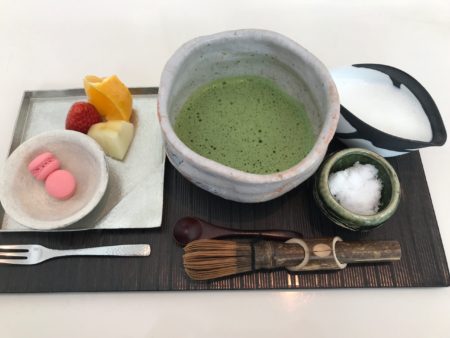
The matcha was served in a tea bowl with some frothy milk in a small cup.
The tea bowl was Shino.
I took milk in my matcha, and after that I stirred it using a bamboo tea whisk.
It tasted very good.
Some macaroons went well with my matcha latte.
Matcha latte is a novelty, and I like it.
I don’t think that matcha latte is wrong.
I enjoyed the last authentic sushi for this year, and I made a reservation for next time.
